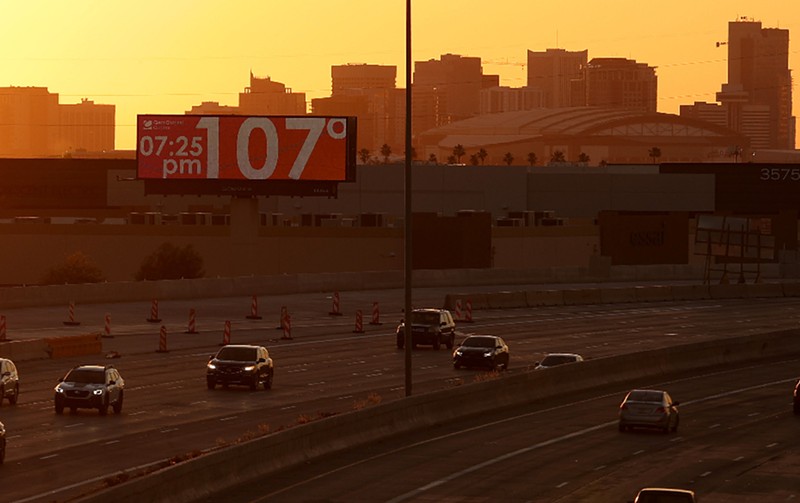Phoenix is one of three Arizona cities that top the International Institute for Environment and Development’s list of cities that experience extreme heat, which is defined as days of 95 degrees or higher temperatures. In 2023, according to data reported by CNN, a whopping 158 days crossed that threshold. That’s 43% of the entire year.
The city with the second-most extreme heat days was Mesa with 141, followed by Tucson with 132. Of the 50 largest American cities included in IIED’s study, only one non-Arizona destination — Las Vegas — cracked 100 days of extreme heat last year.
The study also showed that Phoenix experienced 22 more extreme heat days last year than it did in 1976. The number of extreme heat days in Mesa jumped by 13 during that span, and Tucson’s total increased by 53 days — more than seven and a half weeks.
The trio of Arizona cities may be the hottest in the country, but many other American locales are heating up at a faster pace. Phoenix has experienced only a 16% increase in extreme heat days since 1976, likely because it’s always been so hot. Mesa’s total has increased by only 11%. Even Tucson’s 67% jump seems modest compared with what many non-Sun Belt destinations are weathering.
Atlanta has experienced the biggest jump, going from zero extreme heat days in 1976 to 10 last year — an increase of 2,800%. Nashville is right behind with a 2,133% jump from one extreme heat day to 22. Charlotte’s total has jumped 2,000%, and Miami’s has spiked by 1,850%.
San Antonio has seen the biggest increase in total extreme heat days with 89 more of them than in 1976. With 53 more extreme heat days, Tucson had the fourth-biggest leap. Of the 50 largest cities in the U.S., only three — Los Angeles, Kansas City and Omaha — have seen their extreme heat day totals go down.
Phoenix is already on its way to leading the pack again in 2024.
According to the National Weather Service, Thursday marked the 80th straight day in Phoenix with high temperatures crossing the 100 degree mark. With two weeks still left in August, Phoenix’s average temperature — not a high but instead an average over a 24-hour period — has been 99.2 degrees. So far, this summer has brought the Valley its hottest June on record and second hottest July.
Here are the cities that experienced the most extreme heat days of 95 degrees or hotter last year.
- Phoenix: 158 days — up 22 days from 1976
- Mesa: 141 days — up 14 days from 1976
- Tucson: 132 days — up 53 days from 1976
- Las Vegas: 111 days — up 6 days from 1976
- San Antonio: 96 days — up 89 days from 1976












